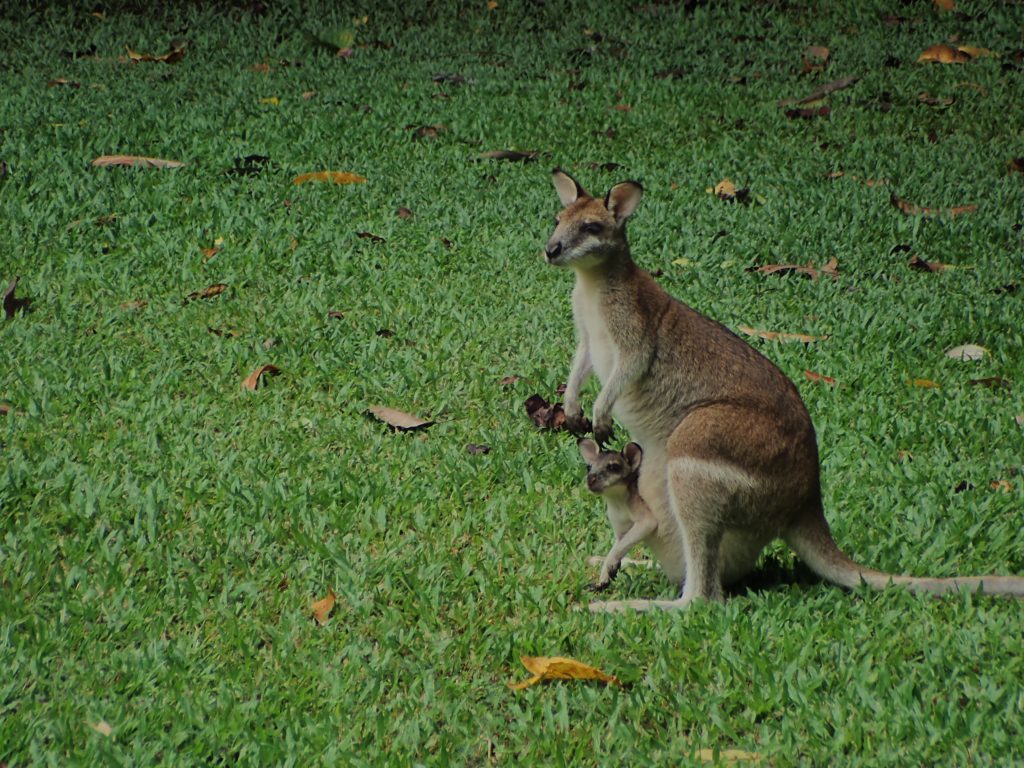
We would like to share our itinerary and experience from our 25 days of road trip from Sydney to Cairns with a motorhome. The Australian East Coast, the New South Wales and Queensland states, have a lot to offer: great beaches, mountains, islands, national parks, deserted beaches, seafood, rainforests, cute coastal towns, palm trees, surfing, the Great Barrier Reef, a tons of water and land activities, sunshine and unforgettable encounters with the incredible Australian fauna.
It is a trip we absolutely loved! The duration allowed us to enjoy without having to hurry and to pleasantly split the driving. Travelling with a camper van is perfect for this journey: except in cities it is very easy to drive and park a big vehicle and there are many great places to camp on the way.
Try to book your vehicle rental early to have as many choices as possible for the best price. We regret not having been able to rent a 4WD (which exists with roof tent, for vans and even motor homes) because it gives access to the possibility of camping on beaches directly by the water’s edge!
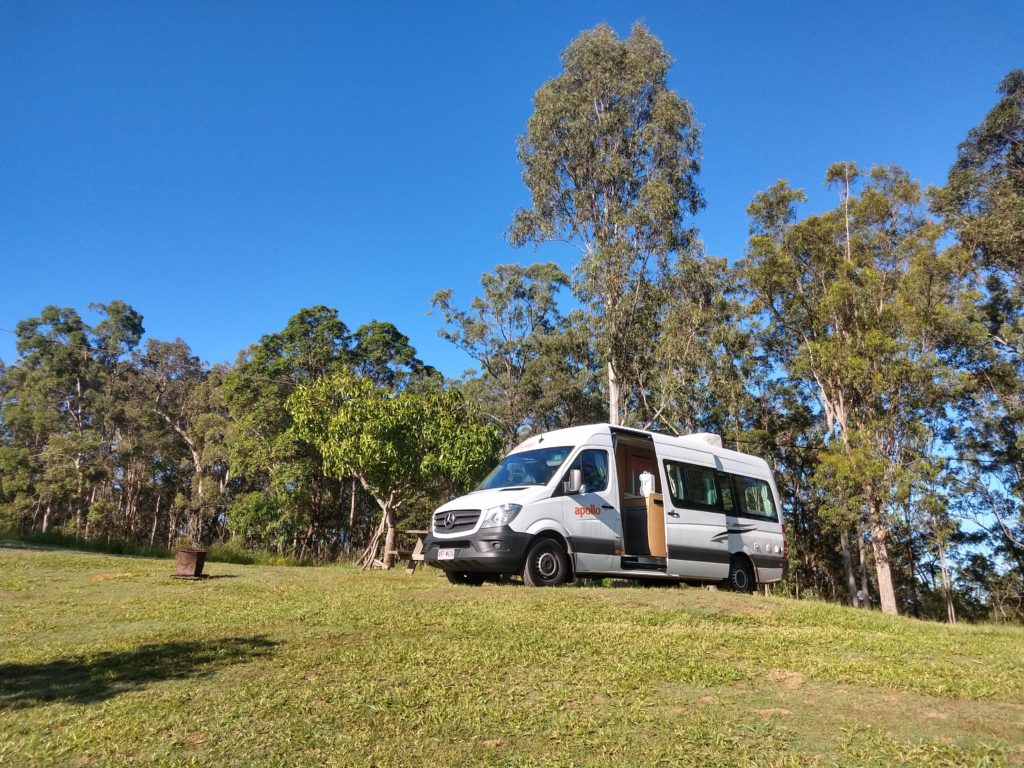
Sydney, New South Wales
Our starting point was Sydney. We took the opportunity to visit the city for 3 days before picking-up our motor home.
Here are our tips:
First, the unmissable city symbols: the Opera and the Habour Bridge. To see them from every angles, we advise you to take a ferry rather than a more expensive cruise. Find the rates on the Opal website. We took a ride to Manly Beach (it is also possible to stop at Watson Bay) to enjoy the view from the bay. We also crossed the Sydney Harbor Bridge for another beautiful view on the Opera House.
Hyde Park and St. Mary’s Cathedral are also worth a visit. Check out the cathedral early evening, you can witness the impressive arrival of giant bats!
As far as museums are concerned, we loved the Sydney National Marine Museum where it is possible to visit several boats. Also, check out the State Library of New South Wales to satisfy the booknerd in you. Moreover, the Sydney Observatory is ideal for a nice and quiet view on the Sydney skyline. Astronomy fans will also appreciate the exhibitions.
Finally, do not miss out on the iconic Bondi Beach. The beach is easily accessible with public transport. As a matter of fact, travelling in Sydney is simple thanks to the Opal card. We advise you to get one as soon as you arrive from a station or at the airport.
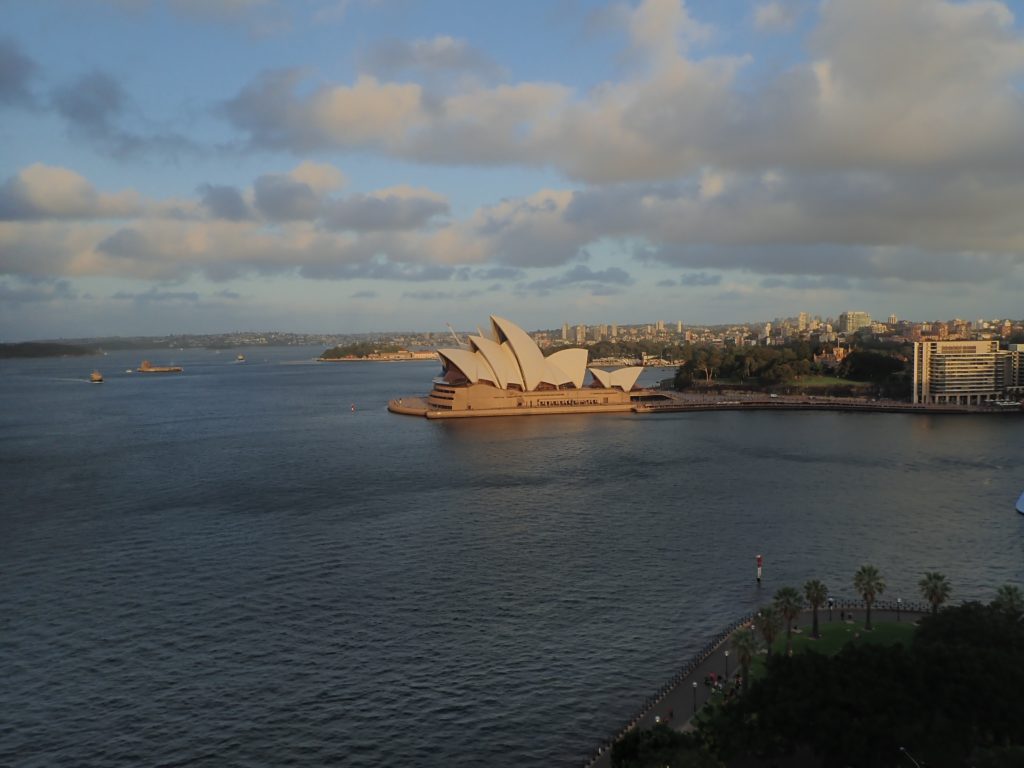
Some tips before you hit the road
To being with, we have lost half a day between picking-up the camper, cleaning it, getting the groceries and making our way out of the city of Sydney. We advise you to consider a margin and not have concrete plans for this first day. Indeed,picking-up the vehicle always takes longer than expected and it is usually necessary to clean it. This tip applies to all road-trips!
Also be aware, in some cities and seaside resorts, campsites are more expensive on weekends (plus there are more people on the beach). We advise you to plan accordingly to try and stop there weekdays.
There are several very practical apps to help you find free and paid campsites. These apps also make it possible to read about other campers’ experiences, locate dump stations or even the nearest showers. We mainly used Campermate and WikiCamps.
We also acquired a local SIM card and chose the Telstar provider which offers the best network coverage in Australia. It is very convenient on the road. Also, the packages are affordable and you can buy the SIM card in any supermarket and activate it online!
Finally, to make the most out of this trip, we have adapted our sleep pattern. It is well known: the real campers get up and go to bed with the sun! This allowed us to make the most of the sunlight despite the fact that the days were getting shorter (as we were travelling in Autumn). It also means we were the first on the hikes and we were always able to grab good camping spots. Moreover, it is not recommended to drive at night in Australia because animals, especially kangaroos, are more active and the risk of collision is high.
Blue Mountains
104 km / 1 h 35 on the road
Once ready to start the adventure, we took the road to the Blue Mountains (west of Sydney). We made a first stop at the Wentworth Falls for a stroll and to observe the views. After this, we joined the free camp site Blackheath Glen Reserve. The road to get there is winding but short, no problem to access it with our motor home. Places on the campsite are limited, so plan to arrive early.
The next day, we visited the Blue Mountains and more specifically the area around the 3 sisters rock formations. We accessed it via Scenic World, which offers ways to easily access different parts of the national park. It is very interesting if, like us, you do not have enough time to do several hikes.
Also, be prepared for some thrilling rides with Scenic World! The Railway will make you descend the mountain almost vertically, it is apparently the steepest train in the world. The Skyway will offer you a breathtaking view on the 3 sisters. To finish with, after your descent, spend some time at the bottom of the mountain for a walk in the park.
Palm Beach
140 km / 2 h on the road
We visited Palm Beach during our house sitting in the north of Sydney. It is a great stop if you go north from Sydney or the Blue Mountains. The city is accessible by road but you can also get there by ferry from Ettalong Beach for a mini cruise inside the Broken Bay. Find the rates and schedules on the FantaSea website.
Palm Beach is a very nice town and you will find two beautiful beaches perfect for a short hike. Indeed, it is possible to make a loop to the lighthouse Barrenjoey Head through a beach and to come back through the other one. You will certainly see surfers and maybe dolphins or whales (depending on the season). If you get hungry, we really liked the Dunes restaurant in the middle of the Governor Philip Park. Do not forget (like us) to bring your swimsuit!
Port Stephens
218 km / 2 h 50 on the road
To split the road in two parts, we stopped for the night at the Kurri Kurri’s free camp.
The next day, we drove to Port Stephens and stopped first at the Worimi National Park. There are the largest sand dunes in the southern hemisphere which extend for 32 km along the sea. We took advantage of this exceptional place to do sandboarding with 4WD Tours. Sandboarding was a first for us, and we had a lot of fun. Our advice for this activity: plan to arrive early. Indeed, around 9:00 – 9:30 we had the dunes to ourselves!
After this, we went to One Mile Beach. It is a pretty beach on the edge of the Tomaree National Park. Finally, we settled for the night at Fingal Bay Holiday Park. The campsite was very nice, quiet and close to the beach. We took the opportunity the next morning to do a short hike in the Tomaree National Park and to check out the sand spit joining Fingal Island. It is possible to cross it at low tide (at your own risk). After this we went back on the road to join our next destination.
Port Macquarie
246 km / 2 h 40 on the road
We did not find any free camps in the Port Macquarie city, so we decided to stop at The Big Axe camping spot in Kew. The next day, we took the tourist drive early to reach the Koala hospital at the opening and and be there for the koalas’ breakfast. Moreover, at this time, there was almost no one else and we were able to talk with the staff. We loved this free experience (possible thanks to donations).
Port Maquarie is a town interesting for its coastal hike to the lighthouse going through in beautiful deserted beaches (we met only a few surfers there). The history museum provides a quick overview of the region’s history.
Koalas
The koala is a shy animal who does not like to be disturbed. Moreover koalas are sadly endangered, decimated by human activities. It is therefore very rare to see them in their natural habitat.
The koala hospital’s aim is to treat and reintroduce koalas who are sick or injured from car accidents or dog attacks. Some are too damaged to be reintroduced, those are the koalas visible to the visitors. The others exposed to minimum human contact in order to maximise their reintroduction success .
We found the work carried out by the hospital to be very good and we recommend the visit. The donations help for the animals’ treatment but it also goes toward research. Finally, the hospital also does a lot of education work to prevent accidents and to help the koala preservation. We have learned a lot during our short visit.
We find this to be a much more interesting experience than paying a large sum to have photos with a koala in your arms, as many parks in the region offer. Also because this practice does not seem to be a good for koalas who are stressed by contact with humans.
Byron Bay
391 km / 4 h 25 on the road
We loved the special atmosphere of Byron Bay, our last stop in New South Wales. Close to Brisbane, the city is very popular therefore everything is more expensive. This also includes the campsites, so we suggest to avoid going there on weekends.
Where to stay in Byron Bay?
As we had to plug our camper anyway, we decided to camp in the city centre to enjoy the nightlife. We opted for the Glen Villa Resort campsite, 50 AUD per night (in low season) for a location with water and electricity. It was the cheapest campsite we found after asking around. The campsite is very well located, just steps from the shopping streets and about 10 minutes from the beach.
If you sleep outside the city, you can park for free at the Byron Community Market during the day. This doesn’t apply when the market is open (Thursdays and Sundays).
What to do in Byron Bay?
The beaches are nice, there are lot of activities and we were told it is the best place to try surfing (but not the cheapest). Also, allow three or four hours to hike the loop from the city centre to the lighthouse Cape Byron Light (avoid driving there, parking spaces are scarce and not free). At the lighthouse, we had the chance to see dolphins and even a turtle. It is possible to have a free guided tour of the lighthouse which allows you to climb at the top. Bring your bathing suit if the weather is nice.
For booknerds, we recommend the amazing bookshop The Book Room. You can spend a while there checking out the shelves or drinking a coffee while reading. If you are looking for second hand books there is also Byron Bay Book Exchange nearby.
We chose not to stop in Brisbane because the city seemed unsuitable for camper vans (too difficult and expensive to park) and we were there on a public holiday.
Noosa
316 km / 3 h 30 on the road
Consequently, we slept on a rest stop north of Brisbane. This was our first day in the amazing Queensland state. The day after, we headed to Noosa to visit the National Park. We arrived around 8 am and searched a few minutes before finding a free parking spot in a street near the park (plan to arrive early especially on weekends and holidays). The park offers different hikes, from 15 minutes to 4 hours, and we had the chance to see our first wild koala along the coast! Then we ate at the Surf Club for a nice view and affordable prices.
In the evening, we headed back to a free (private) camp site on the Koolewog golf course. The place is isolated and offers a spectacular setting as well as a very good view of the night sky, we had a great evening.
Hervey Bay, Fraser Island and Mon Repos
270 km / 3 h 20 on the road
We decided not to visit Fraser Island because of the tour prices. The island is famous for its dingoes and beautiful sand beaches, we have heard many good things about the organised tours. Also, if you have a 4WD you can take a ferry. Rainbow Beach and the Inskip also tempted us but were too much of a detour. If you have visited Fraser Island and Rainbow Beach please leave us a comment about your experience. You can also find more information on this Lonely Planet’s post.
Consequently we went directly to Hervey Bay to enjoy the beach. Unlike Noosa, we were surprised it was almost empty.
In the evening, we spent the night at the free Bundaberg campsite facing the airport (it is only allowed for vans with shower, toilet and kitchen). The next day, we stopped at Mon Repos to observe turtles (from October to April). Unfortunately no luck for us as we were out of season but we came across two kangaroos along the beautiful turtle watching walk.
Agnes Water & Seventeen Seventy : kangaroos and surf
135 km / 1 h 35 on the road
We then took the road again for our next goal: The Horizon Kangaroos Sanctuary at Agnes Water. This is a refuge for orphaned kangaroos where it is possible to camp. We loved the proximity with the freely roaming kangaroos and learned a lot.
Kangaroos
After the koalas, we would like to talk about the famous kangaroos! Indeed, there are many in Australia, even more than humans. Thus they are considered, wrongly according to us, as a nuisance. It’s even a sad and controversial political issue with terrible plans to control the population. For us, kangaroos are beautiful and intriguing animals.
The Horizon Kangaroos Sanctuary campsite was such a good experience that we stayed an extra night. The owners, Garry and Denise, are saving orphaned baby kangaroos. They raise them with bottle feeding before rehabilitating them in nature. In addition to the camping site, they offer a daily experience where it is possible to feed the kangaroos. All kangaroos are completely free to come and go but like to hang out in the area. The program is also educational and we loved learning more about these exceptional animals.
The next day we took our very first surf lesson with Reef 2 Beach Surf. They offer the cheapest courses we have found on the whole trip and it was amazing! We had a blast learning the basics of surfing and practising. Almost everyone managed to get up on their board within the very first hour and we even had a diploma! We highly recommend it.
Then, we had a look at the Captain Cook’s Memorial and enjoyed the beautiful view on the bay.
Eungella National Park
637 km / 7 h 15 on the road
To cut in half the long road between Agnes Water and Eungella National Park, we stopped at the city of Rockhampton. It is apparently the best place to eat cheap beef. We slept for free at the Waverley rest stop.
Our next goal was to see platypus in their natural environment, this is why we wanted to visit the Eungella National Park. We spent the night at the Platypus bushcamp inside the park. Be careful, the access is a bit difficult and you will have to cross streams. Although the camping has a natural pool where platypus live, we were unlucky in spotting some. However we really enjoyed opportunity to swim in the cool waters of the Finch Hatton Gorge.
The next day, we explored the Eungella park and hiked around the Broken River. This time we were luckier and saw a few platypus at Fern Flat and during the hike along the Broken River. If you want to maximise your chances of seeing platypus, it may be better to sleep at the Fern Flat Campground. However, if you prefer a more secluded place and the possibility to swim in natural pools, you will enjoy the Platypus bushcamp.
If you are limited in time to visit the park we advise you to prefer the surroundings of the Broken River compared to Finch Hatton Gorge.
Cape Hillsborough, Airlie Beach and the Whitsundays
172 km / 2 h 20 on the road
We then drove to Cape Hillsborough and its beautiful beach filled with Kangaroos from dusk to sunrise. The campsites were expensive so we decided not to spend the night there.
The weather then went bad so we took a day off at the Airlie Beach Island Gateway Holiday Park and took this opportunity to do our laundry. It is possible to feed the birds in this very nice but expensive campsite. The next day, we visited the city of Airlie Beach and had a stroll by the sea. We liked the open pool, the lagoon, allowing for a safe swim away from the deadly jellyfish.
It is from there that cruises depart for the seemingly paradise islands of the Whitsundays. Again because of lack of budget, and the rainy weather, we decided not to pay for a tour of the islands.
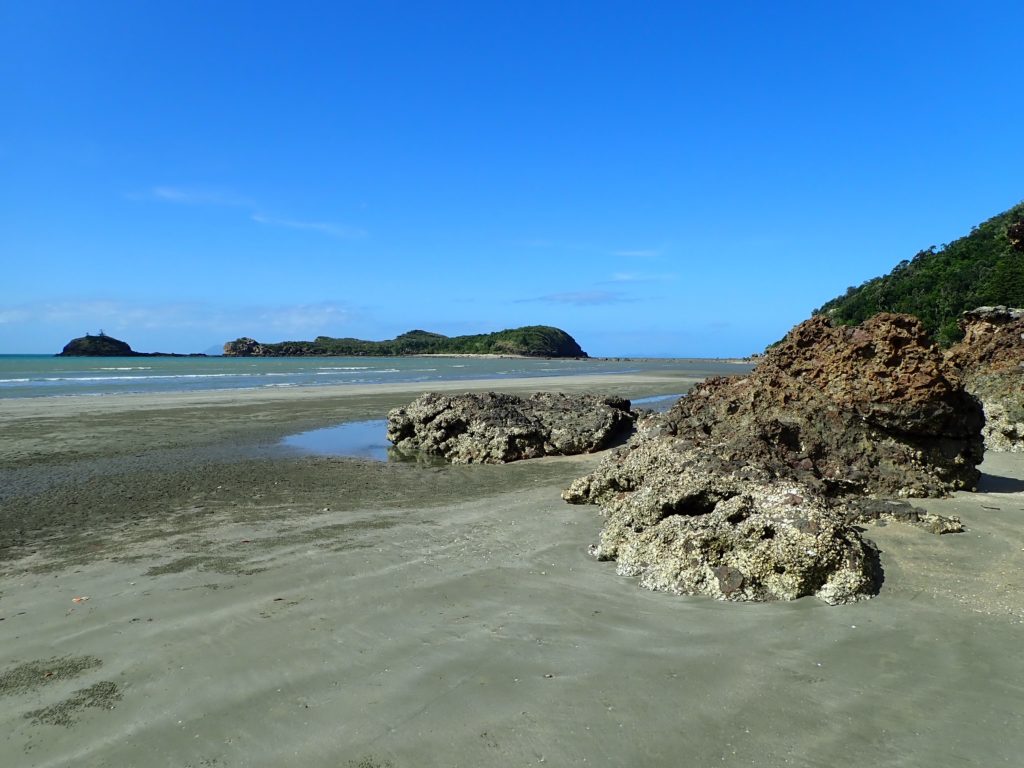
Magnetic Island and Townsville
275 km / 3 h 15 on the road
By choosing not to visit Fraser Island and the Whitsundays, we had in mind that we didn’t wanted to miss the chance to explore Magnetic Island. Indeed, it is not necessary to take part in a tour for this visit which is therefore more affordable. Above all, on this island it is almost guaranteed to cross koalas and wild wallabies.
Unfortunately we spent two nights in Townsville because the weather wasn’t suitable to visit to Magnetic Island the first day. We stopped at the very nice Blue Waters free camping. The next day, we stayed at a free rest area in the city centre closer to the ferry. However, the rest area was very noisy and it as so packed we almost got stuck, we do not recommend it.
To make the most of our day on Magnetic Island we took the SeaLink ferry before 7 am (and could see the sunrise of the boat). Magnetic Island is a small island of 52 km². We walked from the ferry to the north to see the wallabies at Rock Wallabis. Then, the Forst trek allowed us to see koalas very closely in their natural environment. Finally, we joined the beautiful Horseshoes Bay beach to relax. We had also planned to do some sea kayaking and a snorkel cruise but, despite the improved weather, the conditions weren’t good enough.
We then hit the road to stay at the Balgal Beach’s free camping. We loved it, one of the best free camping we did on this trip. Just steps from the beach with picnic tables and electric barbecues. We enjoyed a stunning sunrise there.
Mission Beach
235 km / 2 h 50 on the road
At Mission Beach, we had the chance to see a cassowary! We came face to face with this fascinating and extremely rare bird. The cassowary, descendant from the dinosaurs, is the third largest and most dangerous bird on the planet. We also enjoyed the beautiful Bingil Bay Beach for lunch and coconut picking.
Then, we stopped for the night on the grounds of the Garrandunga hotel where we were able to sleep and use electricity in exchange for a drink at the hotel bar. A quiet place in the countryside with a very nice owner, a very good deal.
Kuranda
163 km / 2 h 20 on the road
The road to the small town of Kuranda crosses the rainforest (and offers chances to spot cassowaries). This place with a hippie vibe is known for its markets. The Kuranda Original Rainforest Markets is the most interesting. We ate a delicious Japanese meal there at Hayabusa of Kuranda Japanese Sweets.
After this, we stopped at the impressive Barron Falls. In the evening we slept at the free Rifle Creek Rest Area campground. However, be careful because the water is not drinkable unless you boil it and we couldn’t use the dump station because of its setting.
Port Douglas and Mossman gorge
66 km / 1 h 05 on the road
In the lovely town of Port Douglas, we did the coastal walk and enjoyed the market (as we were there on a Sunday).
We then went to the Mossman Gorge and were able to observe some animals, including lizards and a wild pig, in the rainforest. The short hike of 2.5 km is very interesting. If you like walking we advise you not to pay for the shuttle and ignore the signs saying otherwise. It takes one to two hours to walk to and from the gorge. We took the shuttle but thought the road wasn’t bad at all to walk on.
In the evening, we slept by the sea at the Wonga Beach Caravan Park.
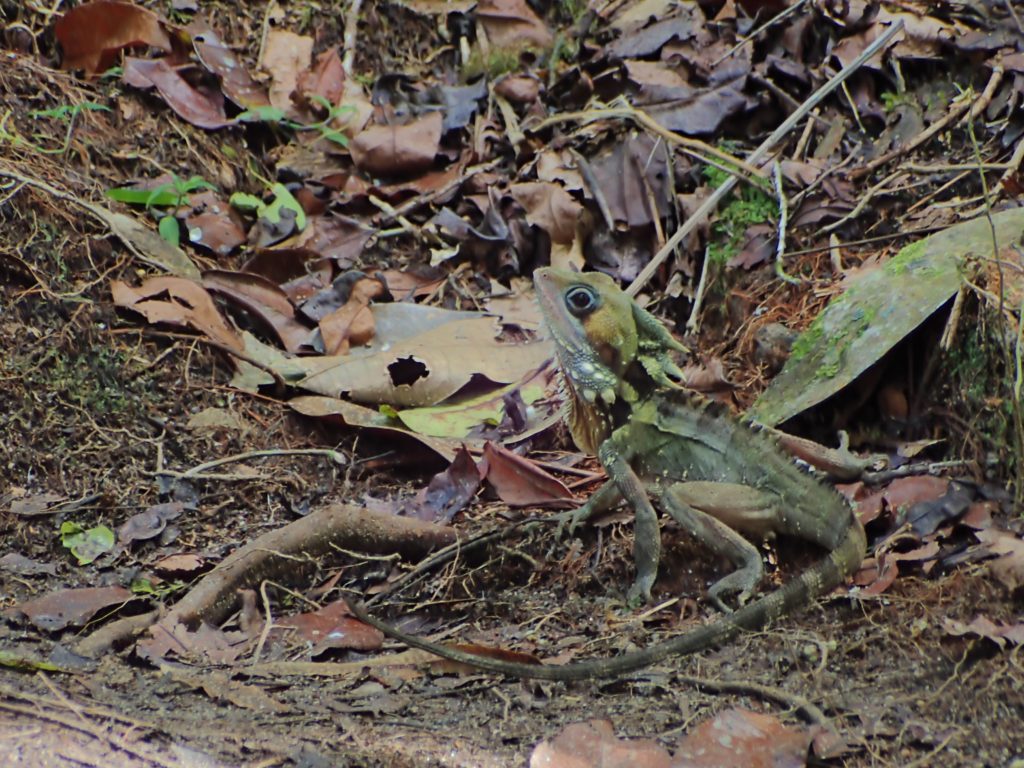
Daintree Forest
85 km / 1 h 50 on the road
To get to the Daintree Forest by your own means, you have to cross the river on a ferry with your vehicle. The ferry is 28 AUD for a round trip. The impressive Daintree Forest is more ancient than the Amazon Forest! We visited the forest all the way to Cape Tribulation. It is possible to do it in one day but we preferred to take our time in this remote location. Remember to get a map from a tourist information centre as there is no network in the forest.
Among the activities there, we ate ice cream with flavours unknown to us at the Daintree Ice Cream Company. They offers more flavor than its competitor (including vegan and lactose free choices for Clémentine). It is also possible to wander through the garden to admire the tropical fruit plantations (and see what’s inside your ice cream). Moreover, it is possible to swim at the Mason’s Swimming Hole, the only place safe from crocodiles! Finally, wallabies and kangaroos can be seen at the Lync-Haven Rainforest campsite.
We spent one night at the Noah Beach Campground. It is a beautiful site in the forest, two meters to the beach, and also the cheapest we found. Remember to book your campsite before your arrival because there are no networks in the forest and it is forbidden to spend the night without having reserved beforehand. We had to go back to Cape Tribulation and make the reservation from a public phone.
The next day after crossing the ferry, we went on a river cruise with Solar Whisper Wildlife and Crocodile Cruises. A nice excursion to observe the crocodiles, frogs and birds which populate the river. We also appreciated the information provided by our guide, the small size of the boat and the fact that it is working on solar energy.
Cairns, Queensland
141 km / 2 h 40 on the road
After this, we headed back south as we had to return our camper van in Cairns. We stopped at Palm Cove for the night at the NRMA Palm Cove Holiday Park. We loved the road along the coast as well as Ellis Beach.
The next day, we visited the Tjapukai Aboriginal Cultural Park. It was the opportunity to learn more about the history of the region Aboriginal peoples, from the creation to the present days. We also participated in dance and music shows, observed various artworks, discovered bush food and medicine as well as traditional weapons. We even had a go at throwing boomerangs and spears. The visit was very interesting and even necessary to our understanding of today’s Australia.
We spent our last night of Australian van life at the NRMA Cairns Holiday Park.
After returning the motor home, we stayed in Cairns for one night and left early morning for a 3 day cruise on the Great Barrier Reef. It was the opportunity for us to pass a new diving certification, our PADI Advanced. An amazing experience about which we wrote an article about: Scuba diving on the Great Barrier Reef: diving cruise and PADI Advanced.
After the cruise, we enjoyed a few more days in the city of Cairns and stayed at the Caravella Backpackers on the esplanade. Cairns is very pleasant, especially the walk along the esplanade. Here too, it is possible to swim safely in a lagoon. We were also very impressed by the free exhibition at the Art Gallery and ate churros at the Night Market.
In total we travelled 4,000 km, in 25 days, in both the states of New South Wales and Queensland. However, we had a good pace and were not bothered by the distances. We feel like we have been able to take our time and had a relaxing journey. It is such an amazing road trip! Moreover, because Clémentine is very afraid of Australian spiders in toilets and showers, we were very happy to have invested in the comfort of a motor home with sanitary facilities.
Clémentine’s reading and movie list
- The Australia Travel Guide and Coastal Queensland & the Great Barrier Reef travel guide from Lonely Planet.
- The classic movie Australia, released in 2008, with Nicole Kidman and Hugh Jackman. A great movie to learn more about the history of Australia and discover the landscapes.
- The novels Oscar and Lucinda by Peter Carey and The Bush by Don Watson.
- We have also selected 3 completely different movies, all initiatory journeys through the Australian centre and desert: Rabbit-Proof Fence, The Adventures of Priscilla, Queen of the Desert and Tracks.
Find here our other articles about Australia: our trip to the Red Centre / Australian desert, Top 10 things to do in Melbourne and our house-sitting experience.
If you also love road trips have a look at our epic road trip series.
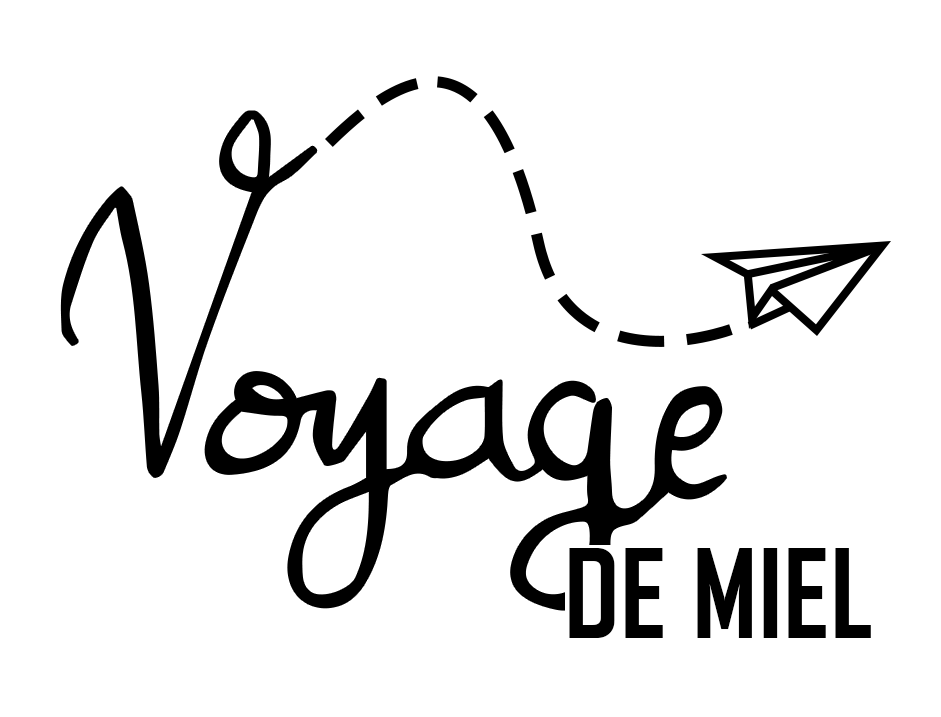
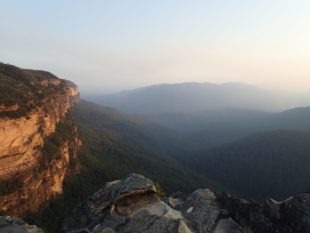
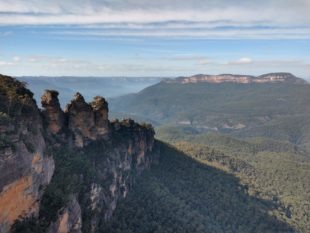
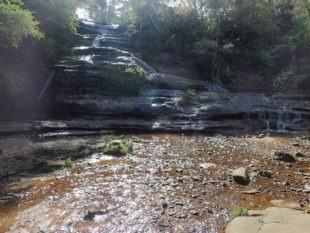
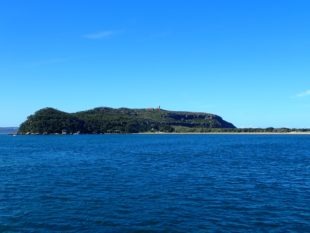
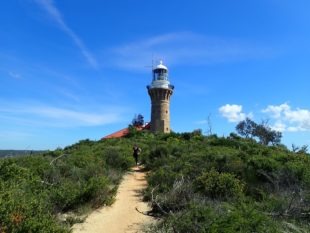
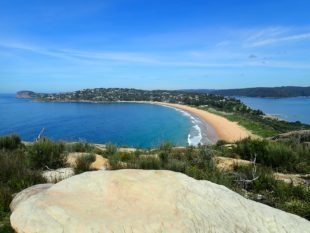
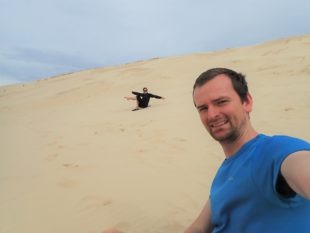
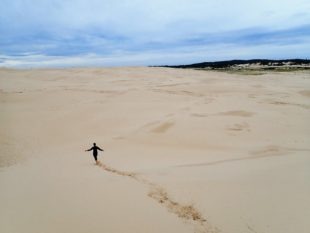
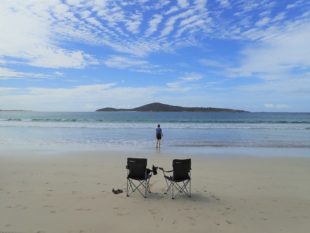
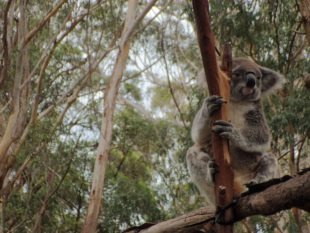
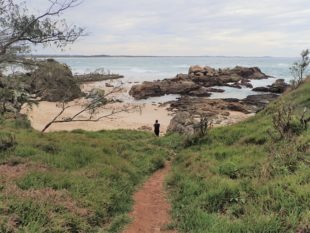
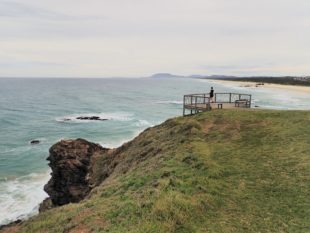
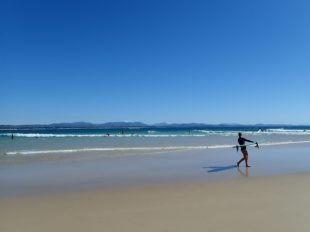
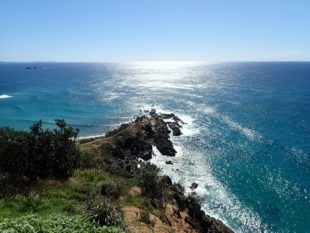
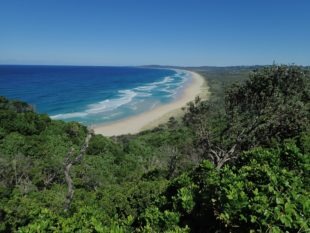
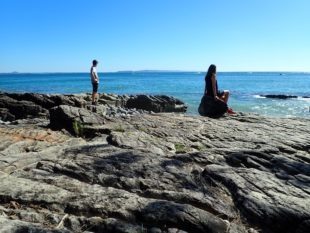
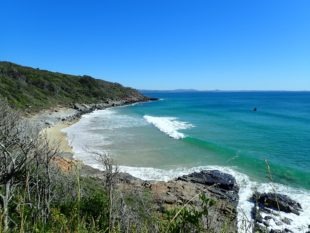
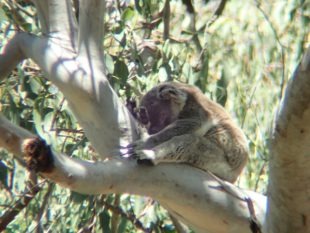
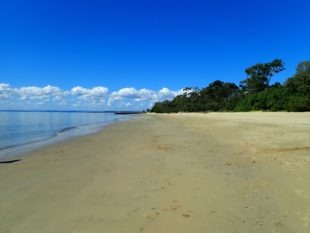
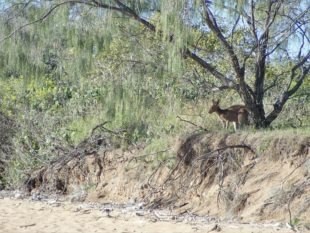
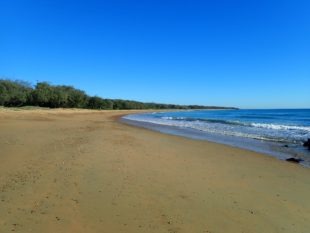
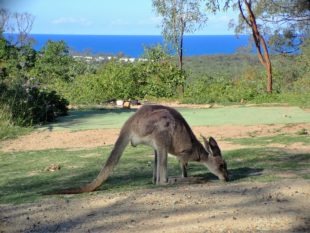
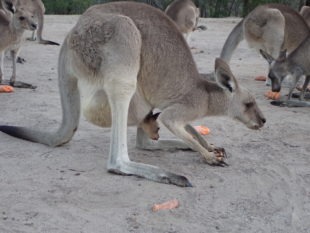
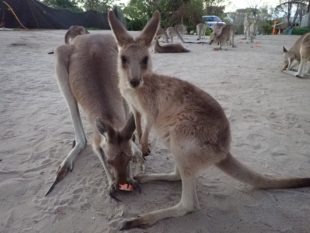
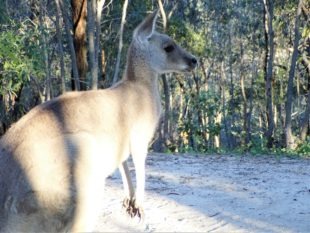
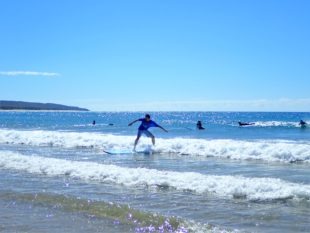
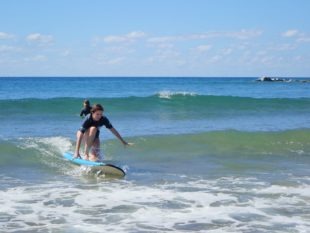
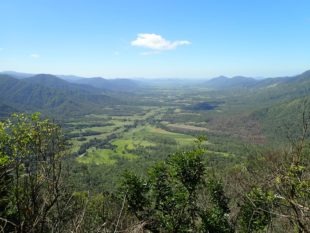
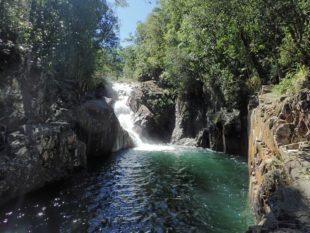
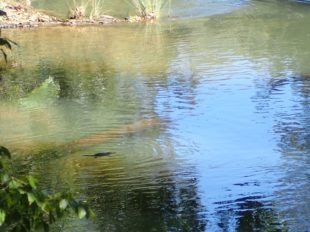
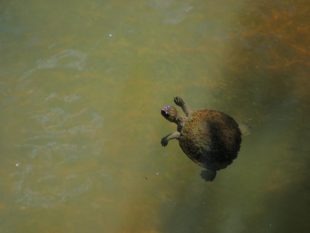
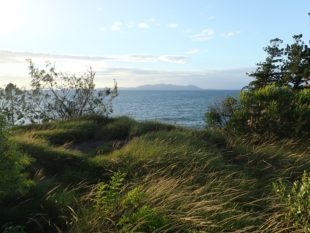
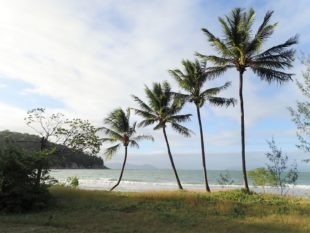
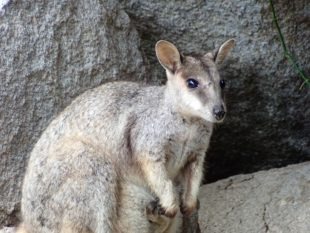
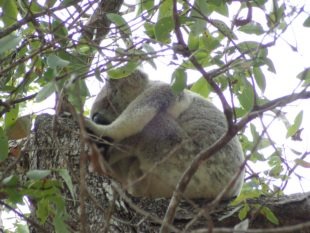
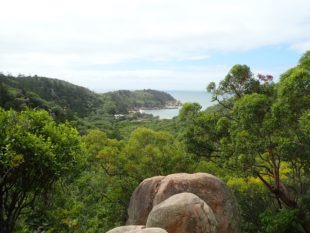
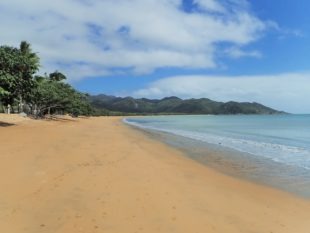
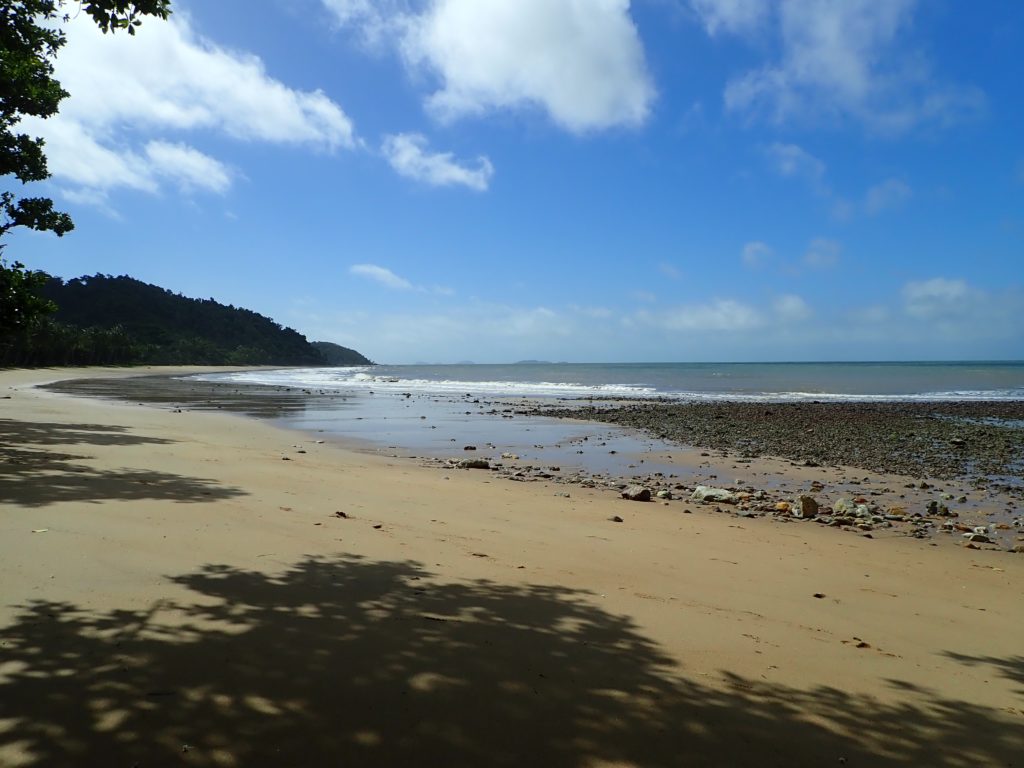
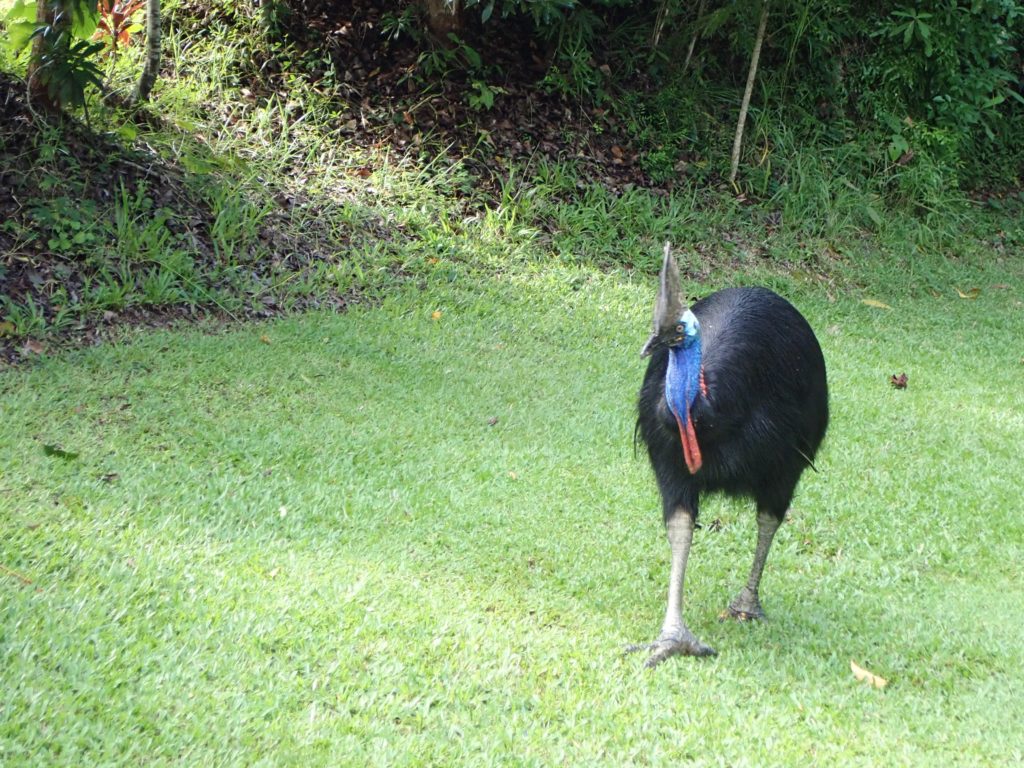
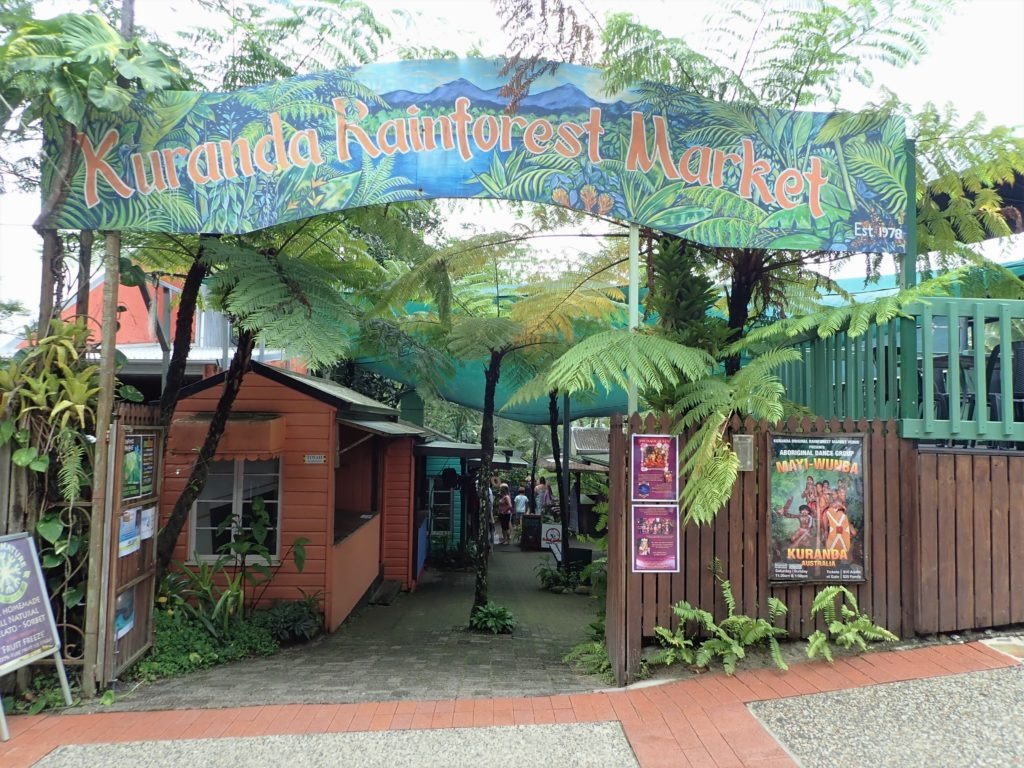
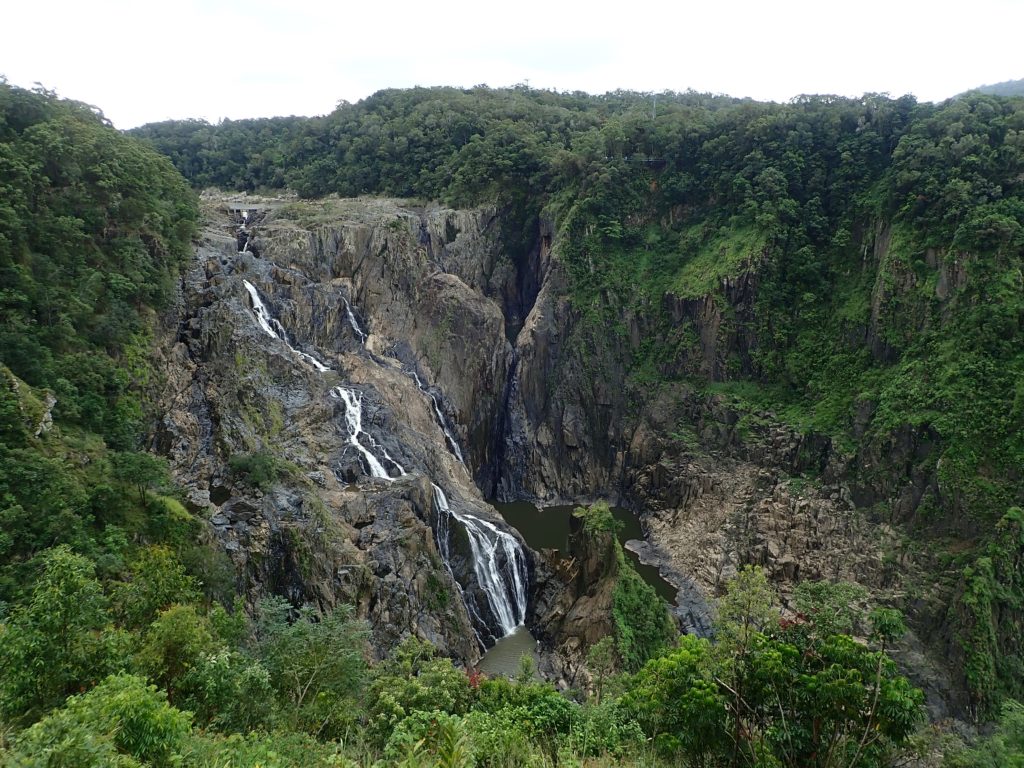
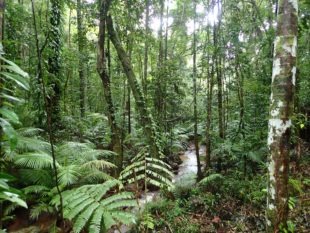
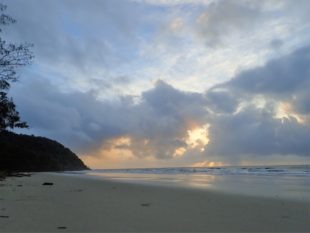
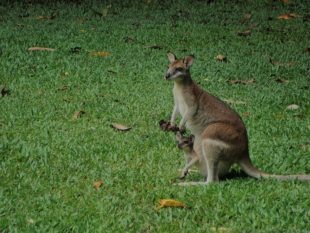
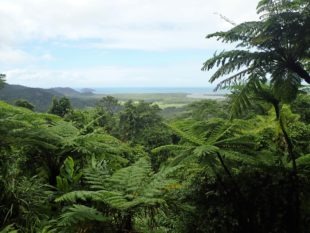
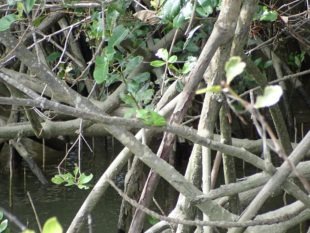
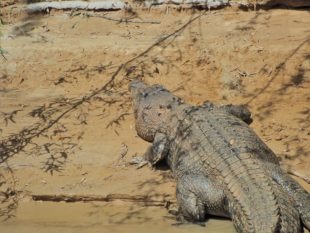
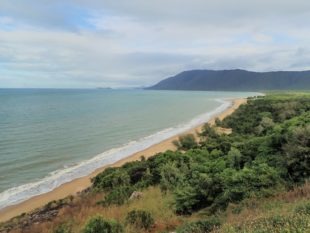
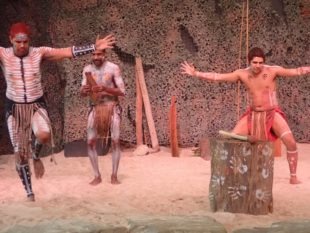
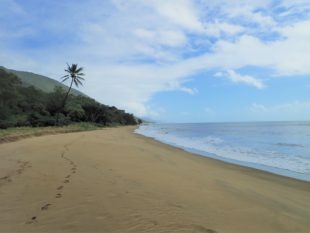
5 Comments
Steve
September 8, 2020 @ 08:01
Thanks for your trip review, it was very enjoyable reading! We live on the Central Coast fo NSW and are moving to Port Douglas in around 12 months time where we have a holiday home.
Petra
January 22, 2023 @ 10:23
When did you take this road-trip? We are planning for August and are wondering about the weather.
Voyage de miel
January 23, 2023 @ 09:47
Hello Petra, many thanks for your comment. We did the road-trip in May, the weather was perfect !
sathesan
September 5, 2023 @ 03:28
thank yo so much for sharing. we are planing next week to cairns from sydney.